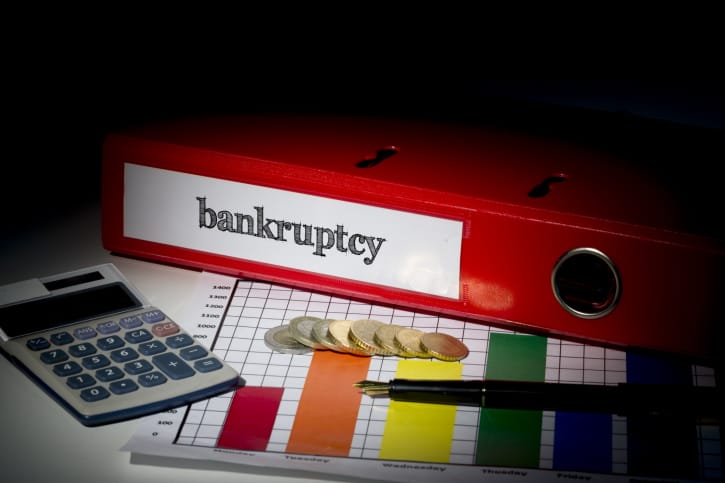 Wavebreakmedia Ltd/Wavebreak Media/Thinkstock
Wavebreakmedia Ltd/Wavebreak Media/Thinkstock
One of the most hotly debated issues in American education today revolves around low-performing schools and districts: how to define “low-performing,” what to do about them, and who gets to decide. That’s at the heart of the deliberations—and arguments—over the No Child Left Behind reauthorization now moving through Congress.
But there’s another species of “failing” schools and districts that doesn’t attract the same controversy, even though it should: institutions that are financially insolvent, or headed toward that status. For example, as of the 2014–15 school year, the School District of Philadelphia had massive deficits—to the tune of $320 million. In Michigan, nearly 7 percent of all traditional school districts and charter school districts (57 of 843) were operating at a deficit at the end of the 2013–14 fiscal year. Over 25 percent of New Mexico districts (23 of 89) required emergency state aid in 2013–14. And there are similar problems in Cleveland, Chicago, Detroit, and elsewhere.
Districts go insolvent primarily because there are insufficient counter-pressures on their leaders to stay fiscally solvent. Existing leaders are often rewarded—through elections, appointments, or re-appointments—when they make promises that obligate monies down the road. Employees of the system often push for higher salaries, expanded benefits, retirement sweeteners, and other advantages that districts simply can’t afford, but that union-friendly boards agree to anyway. Such long-term obligations are largely what put districts in the hole.
Yet feckless leadership is not the sole culprit. Communities rarely embrace tough trade-offs and would rather play kick the can with education officials. These suggestions, then, should be seen in part as ways to lean on school boards and superintendents to take their fiduciary responsibilities seriously, and to counteract the pressures of unhelpful local politics.
So what’s the solution? Who should be in control? What supports and sanctions should be put into place? And under what circumstances should districts be subject to state takeover?
Most state policies for assisting school districts in financial trouble are uneven and complex. Interventions are often haphazard, occur arbitrarily, and routinely place politics over sound economics. States would be wise to consider instead a three-tiered sequence of interventions that minimize disruption for students and maximize financial (and intellectual) resources.
The first tier comprises collaborative supports. District leaders receive assistance from state officials or appointees in understanding their current and future financial situation and managing their finances. The goal is to work with leaders to recognize and rectify the causes of distress.
The second tier is financial management. At this stage, external experts are no longer advisory but oversee and manage a district’s financial matters. The goal is to improve district finances so as to avert costly bailouts down the line, while building the capacity of district leaders to manage once the external managers leave.
The third tier is administrative control—otherwise known as “state takeover.” A state-appointed administrator and/or governing commission replaces or supersedes the superintendent and board and operates, with enhanced powers, the entire district—not just its finances. The goal is to remove ineffective leaders and prevent district bankruptcy and closure.
As you can see, these recommendations are not rocket science, but common sense—which is all too seldom practiced within dysfunctional organizations.
Be aware, however, that this advice is for those districts that have a decent chance of turning themselves around for the benefit of their pupils, citizens, and taxpayers. It’s not for places that are already too far gone. Some districts aren’t worth saving. They are too bankrupt, financially and/or academically, to invest in further. For them, the time for more supports and more cash is over. They need real governance change in the form of state takeover, outsourcing of their schools (perhaps to a “recovery” district), and maybe even closing the district.
Yes, that’s blasphemy in most education circles. But it is entirely possible that state policies could be thoughtfully designed that would shut down a district’s central office and transfer leadership, operations, and funding in ways that could lessen the sting. It would be traumatic in the short run for families, students, and staff. And no, it doesn’t make sense everywhere. Closing an existing district would require the right conditions, including having new providers and top-flight teachers at the ready. It would take courageous state and local leaders with a break-the-mold mentality. In the long run, however, it could be better for kids in the same way that the recovery school district administered by the Louisiana Department of Education in the aftermath of Hurricane Katrina has been largely positive for the children of New Orleans.
Better, though, would be to not allow districts to get in this mess in the first place. As one of us has observed (Roza), the best state policies would prevent districts both from “deficit spending” (which occurs due to pensions and retirement health care) and from obligating out-year expenditures—such as when they sign a five-year labor contract although there’s ample uncertainty as to what revenues will look like in five years.
Hank Williams, Jr. sings a well-known ditty, “Family Tradition,” in which he blames his own bad behavior on his wayward ancestors. But that’s akin to saying that we spend money we don’t have because that’s how it’s always been done. This is no way to run American schools.
Marguerite Roza is Research Professor and Director of Edunomics Lab at Georgetown University's McCourt School of Public Policy. Amber M. Northern and Michael J. Petrilli are Senior VP for Research and President, respectively, of the Fordham Institute.



